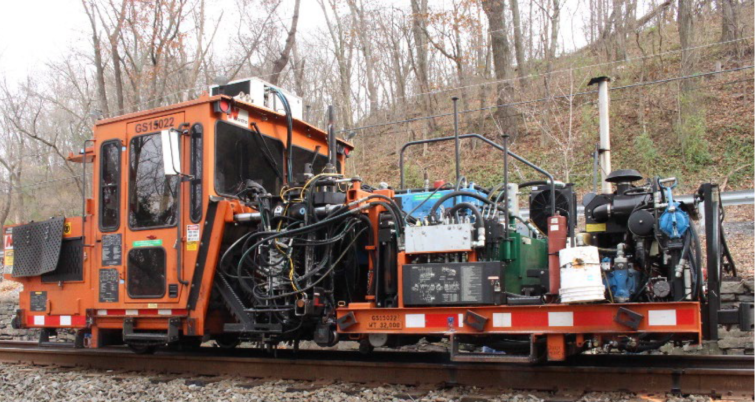NTSB’s Railroad Investigation Report RIR-23-14
Written by Jennifer McLawhorn, Managing Editor
REED, Pa. – The National Transportation Safety Board released its Railroad Investigation Report RIR-23-14.
The National Transportation Safety Board released its Railroad Investigation Report RIR-23-14. According to the report, on December 8, 2021 at 11:20 a.m. local time, a Norfolk Southern Railway rail gang [R-12] was working on the NS Buffalo Line main track 1 at milepost 295.1 in Reed, Pennsylvania, and “three roadway maintenance machines (referred to as Spikes 1, 2, and 3) were driving spikes into the crossties.” The operator of Spiker 2 noticed he had gradually moved closer to Spiker 1 and decided to go back to assist Spiker 3. Then, the operator of Spiker 2 reported he “blew the horn, looked in his mirror, reversed direction, and struck a contract roadway worker, who was between Spikers 2 and 3.” The second Spiker stopped on top of the contract roadway worker, who was fatally injured. The NTSB identified safety issues in its investigation that include “inaudible warning devices, inadequate inspections of roadway maintenance machine horns and change-of-direction alarms, and the inadequate protection provided by the requirement for the 25-foot separation between workers and roadway maintenance machines.” Now, the NTSB has issued new safety recommendations to all Class Is, including Norfolk Southern, as well as the FRA and the American Short Line and Regional Railroad Association.
The 32-page Railroad Investigation Report goes over what the NTSB found to have happened and its recommendations. The report goes into more detail surrounding the accident, the emergency response, the equipment (Spiker warning and rearward viewing devices as well as NS equipment inspection requirements), and it finishes with the analysis, findings, and new recommendations.
On page 22 of the report, the NTSB says that “none of the following safety issues were causal to the accident: (1) fatigue, distraction or impairment of either the Spiker 2 operator or the contract worker; (2) emergency response; (3) weather; or (4) the contract worker’s lack of appropriate high-visibility personal protective equipment.” As well, investigators found that the rear speaker of the spiker’s change-of-direction alarm was “deliberately disconnected” to keep it from sounding continuously when the spiker was traveling, and therefore, the contract worker most likely was not aware of the reversing spiker. The NTSB maintained the importance of the horn and change-of-direction alarm functionalities and how they are “critical to safety on roadway maintenance machines to alert workers of the equipment’s direction of movement.”
Additionally, NTSB investigators found:
- Norfolk Southern Railway’s preshift inspection of the change-of-direction alarm and spiker horn was inadequate to identify if the alarm or any of the horn trumpets were not working properly, because the inspection did not consider whether someone standing at the spiker’s standoff distance of 25 feet would be able to hear the alerts above ambient noise.
- Had Spiker 2 been equipped with a functioning backup camera, the operator would have been able to detect the contract worker before reversing the machine.
- Norfolk Southern Railway’s 25-foot standoff distance rule is inadequate to ensure that operators can see roadway workers who are standing more than 25 feet behind a roadway maintenance machine, because it does not consider the unique design and visibility limitations of each roadway maintenance machine.
The National Transportation Safety Board’s determination of probable cause and subsequent recommendations can be found on pages 23 and 24 of the Railroad Investigation Report RIR-23-14:





